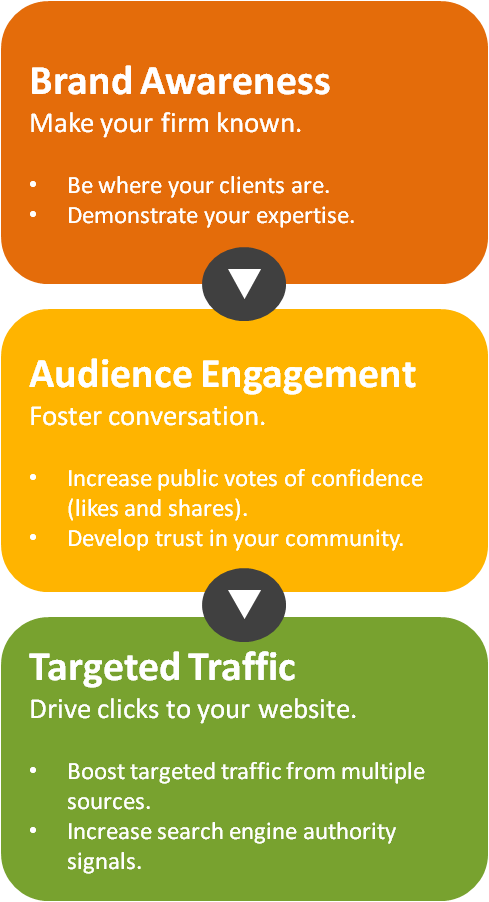Tags are a useful way to classify blog posts by topic. Generally more specific than categories, tags are complementary – they are frequently-mentioned subtopics within the broader categories.
For example, on your Personal Injury blog, say you write a post for the Car Accident category. The post details a number of causes of car accidents, including distracted driving, speeding and DUI. You also mention that serious injuries can happen when seat belts and air bags do not function as they should.
When creating tags for this post, what should you use?
Well, start by asking yourself a few questions:
- What subtopics of Car Accidents have I written about, or will I be writing about, frequently?
- Which of these subtopics will be interesting to readers?
- Am I creating tags for blog readers, or for the search engines?
Let’s address these questions in reverse order.
Who are tags for, anyway?
First, tags have no real SEO value, so don’t be tempted to think, “If I tag this post for texting while driving, people searching for texting while driving are more likely to find my blog.”
That’s simply not how tags work.
Rather, the purpose of tags is to help your readers understand what a post is about and to find similar posts. So what’s important is that your tags capture subtopics that will have some interest for readers. This will influence your decision to create a tag and how you title it.
What is the difference between a good tag and a bad tag?
You now know that creating tags to drive search engine optimization is not worth your time – you should create tags that serve your readers.
In the hypothetical Car Accident post above, you mentioned faulty seat belts and air bags. Are these things interesting to readers? Probably. But how do you structure the tag for maximum effect?
It’s a fair bet that “faulty automotive safety equipment,” as you may have been tempted to use, is a tag that will not engage your readers. It won’t engage your readers because it is long, technical and clunky. Just like legalese, your readers won’t like reading it. And keep in mind that you’ve got three seconds to hook your reader. So keep your tags short and to the point. In the example above, good tags might be “seat belt failure” and “faulty air bags.”
The reader will quickly know, through good tags, the major topics discussed in a post. If they see a tag that is interesting to them, it’s more likely they will invest the time to read the post in full. The tags will also help readers locate other posts that cover those topics.
How do you know a topic is tag-worthy?
Let’s say one of the safety defects you mention in your Car Accident post is poor roll-bar design. It’s certainly fine to mention poor roll-bar design in your post, but if that defect is not encountered very often in the real world, it doesn’t make sense to create a “defective roll-bar” tag.
Now, you might be thinking that rollover accidents happen frequently and often lead to serious injuries, and there may be an auto product defect angle in some of these cases. True. But then the appropriate subtopic is “vehicle rollover” or “rollover accidents,” not the over-specific “defective roll-bar.”
Creating a tag for every possible subtopic dilutes the utility of tags in general and results in a large number of “orphan” tags – tags used only once or twice.
The presence of a large number of orphan tags can lead to a bad user experience. Imagine a reader sees the tag “defective roll-bar” and wants to learn more. After clicking the tag, the reader naturally expects a list of all other posts on the topic. But all that shows up is the single post he or she just read. How disappointing.
For those few folks who really want to learn more about roll-bars (or any other subtopic or sub-subtopic), creating a tag creates an expectation that there is more information on the subject. Creating an expectation that will not be met can produce reader disengagement.
Our advice: tag only the important, interesting, frequently-mentioned subtopics on your blog. It’s fine for a post to have one or two tags – or none. This is much better than a post with several confusing orphan tags.
It is worth it to go back and correct tagging?
Bloggers at all levels of experience encounter the same issue: at some point during the ramp-up of a blog, you realize you’ve been following less-than-optimal tagging practices.
There’s good news: you don’t necessarily need to go back and retag everything. In the few cases where it makes sense, simply add or delete tags and save the post. Saving the post will publish it with the changes.
Our best advice – don’t worry about it. If you’ve learned something useful from this discussion, simply put it into practice from this point forward. There’s almost certainly no need to go back and adjust the tagging of previous posts.
For Blog Service Premium and Blog Service Essential clients, your FindLaw blog writers will correct any serious problems that impact user experience. And all FindLaw Blog Services clients have a dedicated team at their disposal to answer questions about tagging and any other blogging or social media issue.
Tagging dos and don’ts
- DO try to select two to five tags per post. One or none is okay, but more than five can look “spammy.”
- DO include the post’s category as a tag.
- DO use the auto-complete function in Moveable Type to select existing tags, when appropriate (as opposed to creating new tags for each post).
- DO be consistent regarding capitalization in tags. Moveable Type alphabetizes capitalized and lower-case tags separately. That makes it hard to keep track of what tags already exist and can lead to duplication. Your best bet is to simply decide up front that all tags will either be capitalized or lower-case.
- DON’T create tags that are basically synonymous (e.g., separate tags for “car accident,” “car accidents” and “car wrecks”).
- DON’T rely on tags to function as search engine keywords. Remember, tags have little or no SEO value, and should only be used to facilitate the user’s search for relevant information by general topic, specific subject or broad theme.
Now you can tag your blog posts with confidence.
As always, if you have a specific question about your FindLaw Blog Services subscription, your Account Manager is glad to help. If you have general questions about effective blogging practices or suggestions for future training topics, feel free to submit these now.
Thank you once again for choosing FindLaw for your website, blog and social media solutions.





